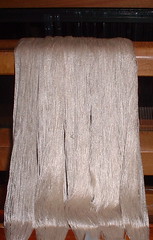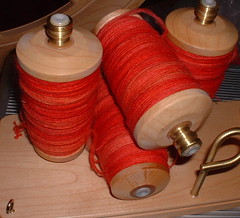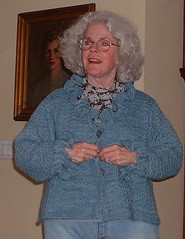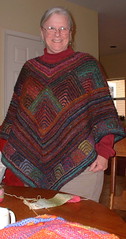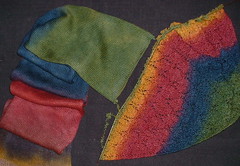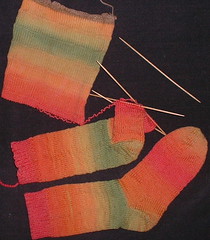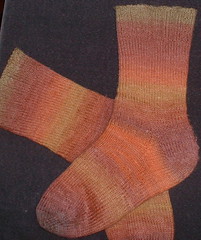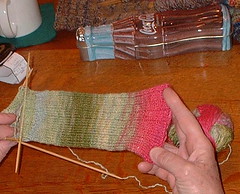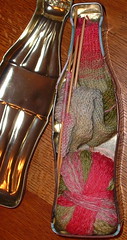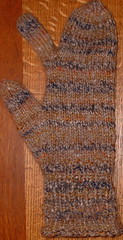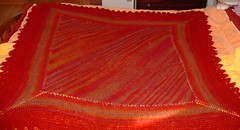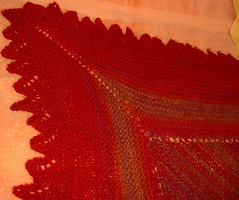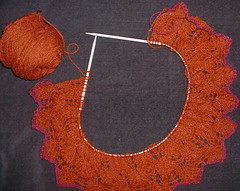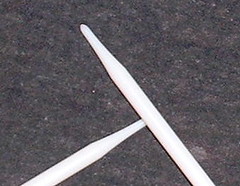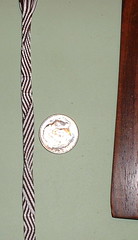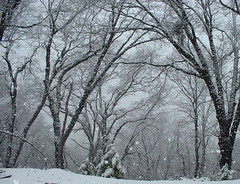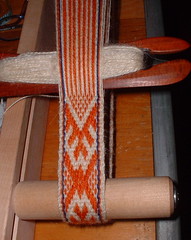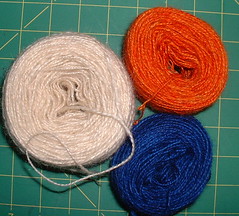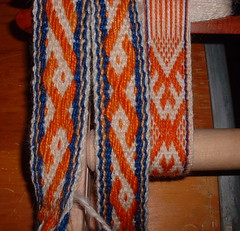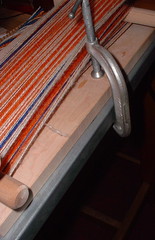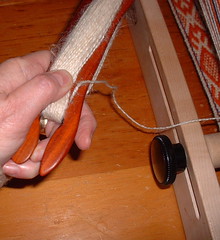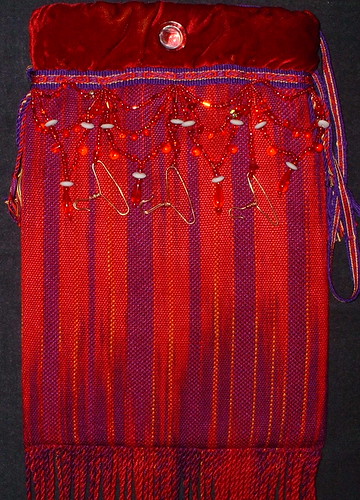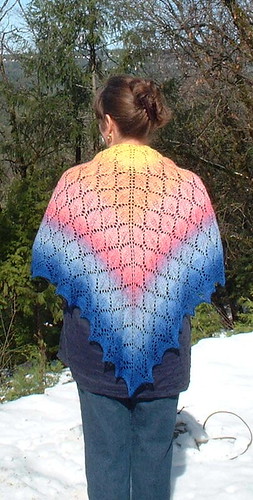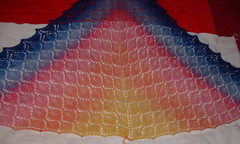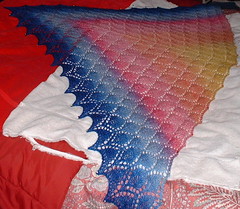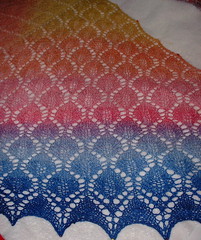A few emailed questions have prompted this tutorial. I needed do this anyway for our
CNCH demonstration, and the questions have provided me with an opportunity to set this up.
The following tutorial is about speckled background pickup techniques. There are others: horizontal stripe backgrounds, and complementary pickup. But I will limit this demo to alternating, or speckled, background bands.
Bands like this are woven in Europe (Latvia, Lithuania, Estonia, Sweden, Finland, the Baltic areas) and in Central America (Mexico) and the Southwest (Navajo and Hopi). I learned this technique from Jaquetta Nisbett, who has a great video on band weaving, and from my friend Rute, who is from Latvia.
First, the question from Leo:
I was wondering if you post/share the pattern layout for your bands.Here is a draft for a simple seven pattern thread band:

What you see here is a pattern indicating white threads (denoted by the squares without centers) and black threads (denoted by the solid black squares). There are six white threads in each border, then pairs of black pattern threads, alternating with white plain weave in between. The two rows indicate whether the threads are in the open shed, or the heddled shed. The "O" in the top right of the pattern indicates threads in the open shed, and the "X" below that indicates the heddled threads.
The draft is read from left to right, starting at the left side of the warp. The pattern threads are set up in pairs, and the plain weave threads alternate between them.
Next, we have a drawdown of what the above draft
could look like:

We will develop this pattern by picking up threads by hand. To pick up threads, we separate the warps at the spot we want to pick up pattern threads, reach down and pull them up from the lower shed to the upper shed. Some people use a sharp object, like a knitting needle, to help pick up threads, but I use my fingers.
So, we start with the bottom of the drawdown and just weave without picking up any pattern threads. This creates a speckled area, just like the draft name implies. Then we will pick up threads, following the drawdown, which looks like this:
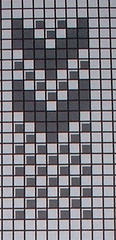
Here is the porton of the draft we are working,
and here is what the band looks like:
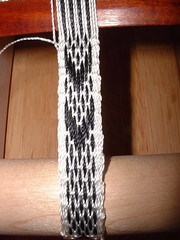
Then, we can pick up threads, and
push down threads we don't want to see on the surface. The pattern will indicate when a thread is pushed down, in this case by a blank circle:

Push down the threads by separating the warps at the location you wish to remove pattern threads, and slip the pattern pair to the lower warp, below the weft thread pass. Starting with the top two "v"s in the draft, the band now looks like this:
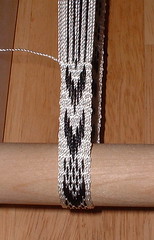
Next we weave the other motif on the pattern, reversing the direction of the "V", making a rose, or diamond shape:
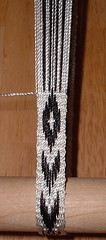
At this point, the threads floating on the surface and on the undersurface of the band must be taken into consideration. Do you see in the pattern how some of the threads in the diamond shape are floating on the surface for five weft thread passes? That's about the limit for this thread/sett. The same five thread float in smaller threads, or in wool, or a sticky cotton thread, might not be so bad.
So the pattern, the sett and the thread have to coordinate. How do we figure this out? Sometimes, a sample is the only way to tell. Generally, the finer threads can handle the more complex patterns, heavy threads require simple patterning, with no long floats.
Tension matters too, and affects the way the weft will beat in: play with the tension and see if you like the band better with it tighter or looser. These are warp faced bands, so the warp has to undulate over the weft. Tight tension precludes much undulation, and loose tension allows a closer, tighter beat, and a firmer band.
And the question from Gail:
I am interested in learning
more about the pick up techniques that you use on the inkle loom.The best resource I can think of is
Jaquetta Nisbett's video on pick up bands from Victorian Video, from the
Yarn Barn in Lawrence, KS.
Evelyn Neher's book
Inkle is good, and Mary Miegs Atwater's
Byways in Handweaving. There is nothing like a good hands-on demonstration, though, so if you can make it to CNCH, in Modesto CA, I'll be there with several members of my guild, Sunday, May 7th, from 2-4, in the demo area.
